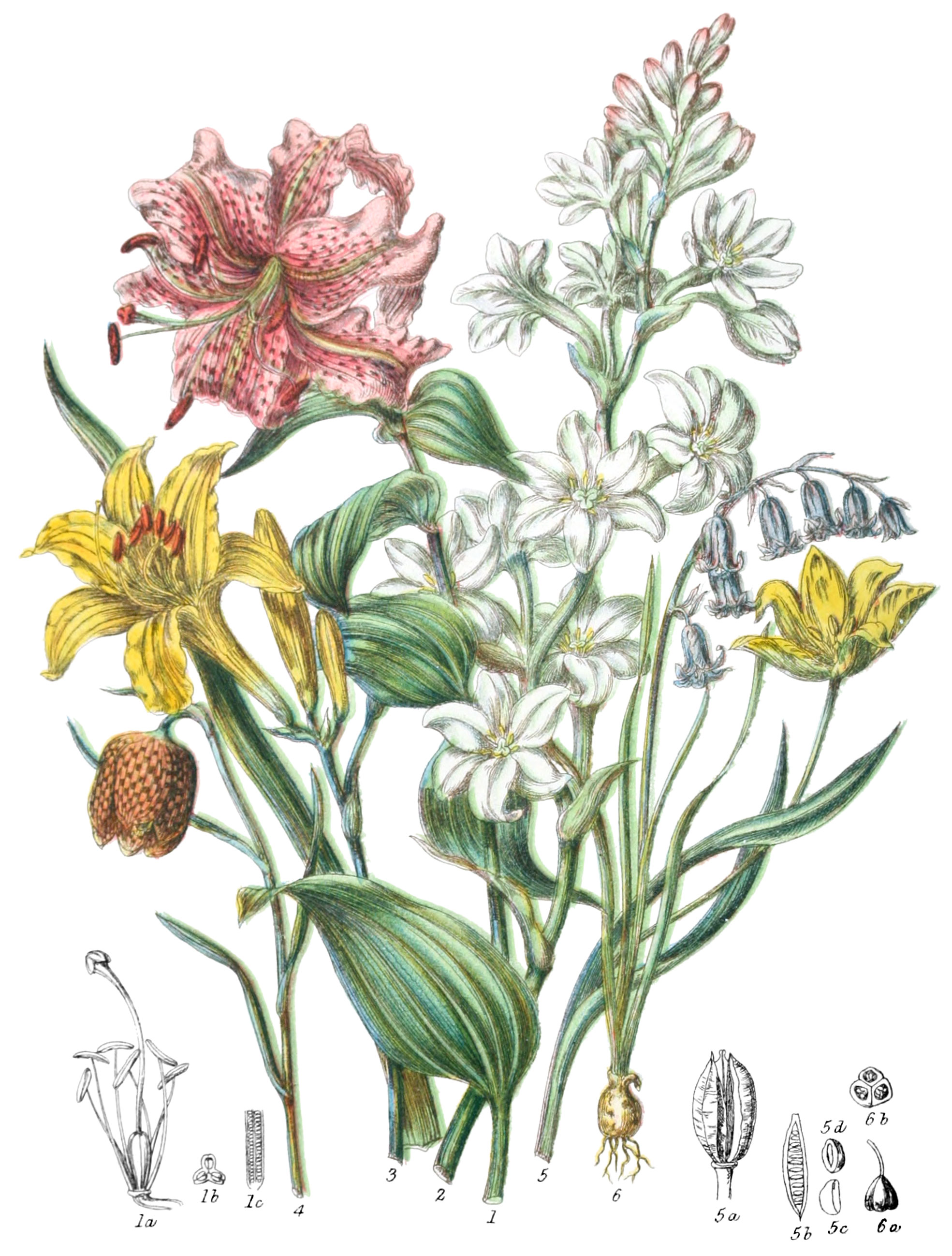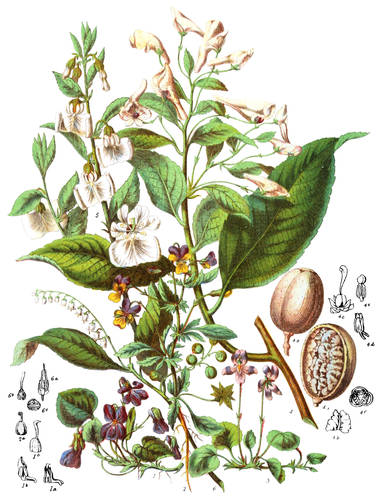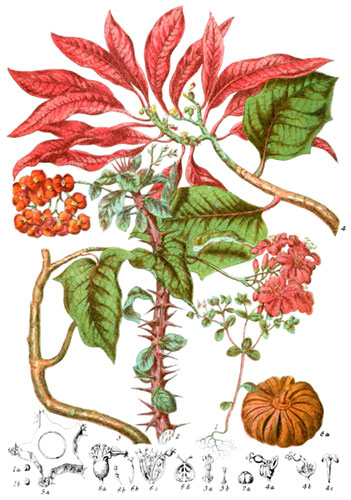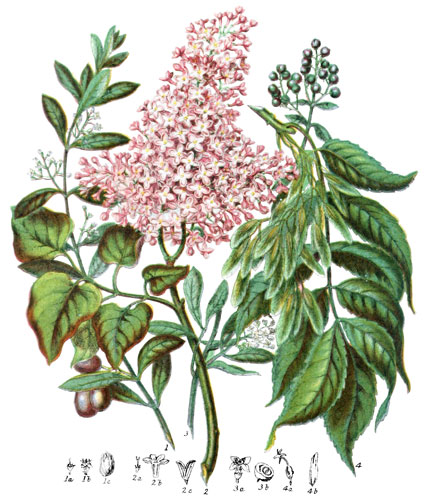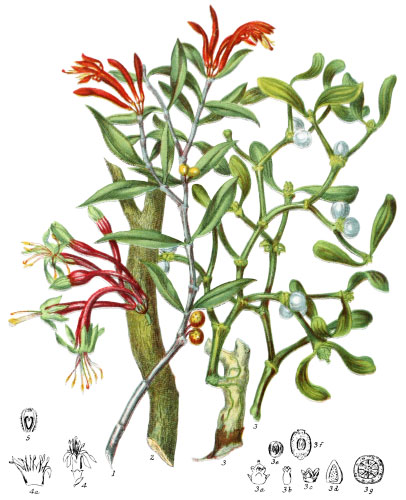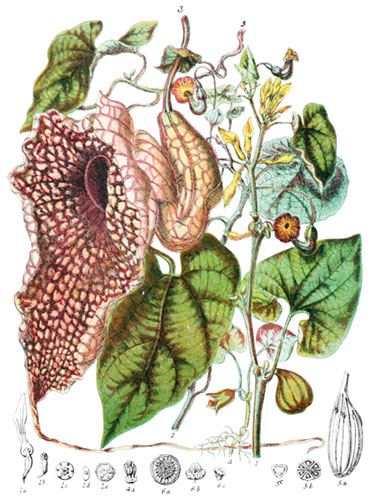Key characteristics
Trees, shrubs, and herbaceous plants with bulbous, tuberous, or fibrous roots. The leaves are narrow with parallel veins, not jointed to the stem. The flowers are composed of sepals and petals almost similar, regular or nearly so, sometimes cohering at the base into a tube. The stamens are six, inserted into the sepals and petals, the anthers open inwards. The ovary is free, three-celled, many-seeded, the style single, the stigma simple or three-lobed; the fruit is a dry capsule, three-celled, many-seeded; the seeds are laid one over the other in one or two rows, and contain fleshy albumen.
This Tribe has close affinity with Smilaceæ and Colchicaceæ.
Acrid qualities prevail in some of these lpants, but the bulbs of many are wholesome food.
Select plants in this order
Not all plants listed are illustrated and not all plants illustrated are listed.
- Lilium, derived from the Celtic Li, signifiying whiteness, is a splendid genus of bulbous plants bearing flowers of remarkable elegance, and fiar or brilliant hues.
- L. candidum of the Levant was the emblem of purity in the earliest times of pictoral art, and frequently portrayed by the old painters.
- L. martagon is the Turk’s-cap of Germany; L. tigrinum was brought fifty years ago from China: many other species are frequent in gardens.
- L. speciosum (1) is one of the last added to our of these beautiful plants.
- The bulbs of L. pomponium are a common food of the Kamstchatkans.
- Polianthes (2) is esteemed for its highly odoiferous flowers; it is cultivated largely in Italy, from whence the bulbs are sent to all parts of Europe: the double-flowered variety is most general, and attains five feet in height.
- P. gracilis is a yellow species of Brazil.
- The golden Hemerocallis (3) is dispersed in Siberia and China.
- Funkia, a nearly allied genus with blue or lilac flowers, belongs to Japan.
- The curious Fritillary (4) is one of our rarest flowers; a chief locality is Magdalen Meadows, Oxford. A more noble species is F. imperialis of Persia, the Crown-imperial, which displays its red and yellow coronet of pendent flowers in early spring.
- Nearly three centuries ago, the first Persian tulips were brought to England from Constantinople; but not until the close of the seventeenth century had the cultivation attained its height in Holland and England, or a single bulb its extravagant price of 500l.
- T. gesneriana is the original of the countless varieties.
- T. sylvestris (5) is interesting as the solitary British example, on the northern limits of the genus.
- T. suaveolens, the Van Thol, comes forth with the first spring in the south of Europe.
- A rival in value and estimation is the Hyacinthus orientalis; at Haarlem 2000 varities were known during its extreme popularity: in fragrance and beauty the Hyacinth has surpassing claims for admiration.
- Scilla nutans (6) is frequent in woods and under hedges, in many parts of England and on the Continent; S. bifolia grows in similar situations.
- S. autumnalis on dry commons in autumn; S. sibirica is the most northern species.
- Agapanthus is well known as the blue African Lily.
- Ornithogalum, the Star of Bethlehem, has several species in England; it is found also in California, Egypt, and at the Cape.
- The only useful species is O. squilla, the medicinal Squill, the bulb of which is very large, and the stem, bearing a find spike of white flowers, is often two feet high.
- In ancient times a classical fame was attached to Asphodelus, abounding in Greece, where it now affords food to sheep.
- One of the latest discoveries in this tribe is Chrysobactron, with brilliant yellow flowers in Lord Auckland’s Isle.
- Yucca has a grand appearance, when the tall spike of graceful pale flowers rises out of the tuft of rigid leaves.
- Aloe, a genus almost confined to the Cape, affords a valuable medicine in the dried juice of the leaves of the shrubby species, the fibres are made into cordage and coarse cloth.
- But the most valuable marterial for cables and strong ropes is obtained from the leaves of Phormium tenax of New Zealand, now becoming of very extensive importance.
- Another remarkable plant belongs to Australia, Xanthorrhea, the grass-plant; on the summit of the tall palm-like stem covered with the remains of sheathing leaf-stalks is a tuft of long wiry leaves, from the centre of which springs the tall close spike of flowers like a bulrush. The inner part of the leaf-bud is eaten by the natives, who esteem the balsamic flavour caused by the gum-resin: this singular plant forms a link with the Rushes, thus connecting one of the most highly developed with one of the humblest tribes.
- From the earliest times a wholesome condiment to food has been derived from Allium, yielding Garlic, Onions, Leeks, Chives, all possessing strongly-scented hot properties, of great value to man in all climates.
Locations
This extensive Tribe is widely dispersed; most abundant in Temperate regions, frequent in Australia and at the Cape of Good Hope, rare in the East Indies. The Tropical species are chiefly aborescent.
Legend
- Lilium speciosum. Showy Lily. Japan.
- Pistil and Stamens of L. candidum.
- Section of Ovary.
- Long Section.
- Polianthes tuberosa, Sweet-scented Tuberosa. East Indies.
- Hemerocallis flava, Yellow Day lily. Siberia.
- Fritillaria Melagris, Chequered Fritallary. England.
- Tulipa sylvestris, Wild Tulip. England.
- Capsule.
- Seed-valve.
- Seed.
- Section.
- Scilla nutans, Hare-bell. Britain.
- Ovary and Pistil.
- Section of Ovary.
Explore more
Posters
Decorate your walls with colorful detailed posters based on Elizabeth Twining’s beautiful two-volume set from 1868.
Puzzles
Challenge yourself or someone else to assemble a puzzle of all 160 botanical illustrations.
